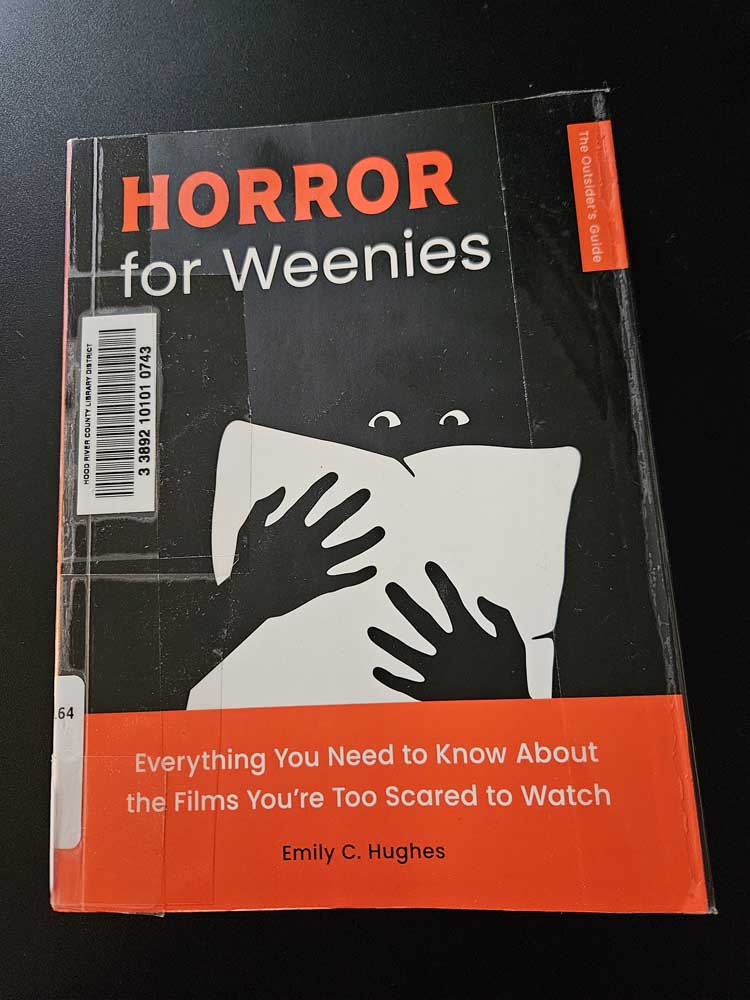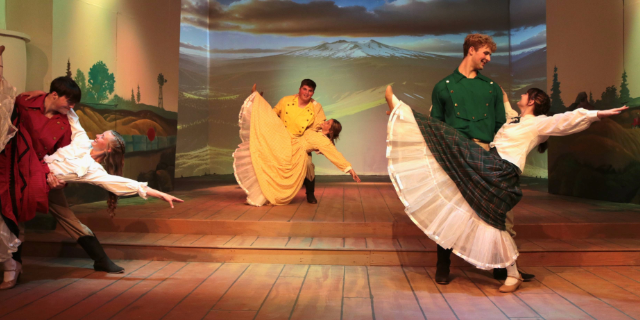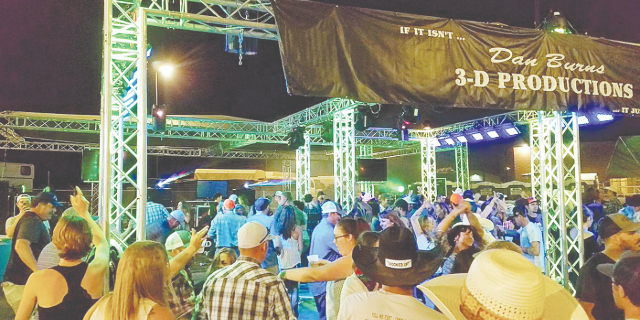‘Horror for Weenies’: Reducing the scare of scary movies
Published 3:00 am Monday, December 23, 2024

- “Horror for Weenies” gives a comprehensive overview of 25 scary movies from the last 50 years.
My want-to-read list is probably longer than I’ll ever complete, but that doesn’t stop me from adding more books.
I recently came across NPR’s Books We Love and scrolled through the 351 titles.
Quite a few made it to my catalog on Goodreads, the app where I track books I want to read or those I’ve finished, and I immediately requested “Horror for Weenies: Everything you need to know about the films you’re too scared to watch” by Emily C. Hughes.
Horror might seem an odd choice for December when jolly holiday movies abound on every channel and streaming service.
October is more fitting for the spooky tales. However, I avoid anything labeled horror any time of year.
However, I can read a scary book much easier than watch a scary movie. Maybe it’s because my mind can scale down the scary parts? Or perhaps it’s because I can skip sentences or paragraphs — I suspect my family would get annoyed if I tried to fast-forward a movie, and that option isn’t possible in a movie theater.
“Horror for Weenies” was quite an entertaining read. Hughes covers 60 years of scary movies, starting with 1960’s “Psycho” and ending with 2018’s “Hereditary.” There are 25 in total, which the author chose for their influential effect on the industry.
In the introduction, Hughes explains that she focused on “influence over popularity, and many in the book were “critically dismissed or derided when they were released.”
Yet these films still affect us.
“The films we still talk about fifty years later have an ineffable psychological stickiness, catching on the jagged edges of our consciousness at the place where logic gives way to visceral fear,” she writes. “Michael Myers has lasted in our cultural memory for forty-five years because he frightens and fascinates us, not because ‘Halloween’ hit a certain box office benchmark.”
Although horror is my least favorite genre, I have seen four films that appear in this book: “Psycho,” “The Shining,” “Scream” and “The Blair Witch Project.”
Alfred Hitchcock, of course, is a master at horror. Whenever we pass an isolated motel on our travels, I can’t help but think of “Psycho.”
I read Stephen King’s “The Shining” before I watched the movie. Both are scary, but I think the book captures the psychological aspect much better — Jack Nicholson’s portrayal of the character Jack lends more craziness than I think King intended.
In her book, Hughes gives spoilers about horror films but also talks about the history of horror and how it has changed over the decades.
Each entry follows the same formula:
- The basic idea
- You might actually want to watch if…
- But you should definitely avoid if…
- Okay, here’s exactly what happens
- Why it matters
- Iconic moments
Hughes interjects humor throughout the book, mostly in commentary about the plot.
Take, for instance, the entry for 1999’s “The Blair Witch Project.”
She writes, “You might actually want to watch if it feels like it might be healing for you to watch the three most annoying people you went to film school with get lost and turn on each other.
“But you should definitely avoid if you motion sick easily — I can’t overstate how hard the handheld camerawork can be to watch — or if you enjoy camping and would like to continue enjoying camping.”
The best horror, to me, is the type that uses the genre for a greater message (slasher films with lots of gore are not my favorite).
Take, for instance, “Carrie.” Yes, it’s about a teen girl with telekinesis who ends up murdering a bunch of people, but it’s the “why” that fascinates me. Hughes explains: “She’s isolated and traumatized by both the ostracism of her peers and her mother’s tyrannical zealotry …”
In the zombie film “28 Days Later,” she recounts that director Danny Boyle “tells us pretty directly that the rage virus is a metaphor for humanity’s boundless capacity for cruelty and violence: the virus unlocks and enhances what’s already innate to our species.”
The descriptions of these scary movies leave nothing out, but I didn’t feel like sleeping with the light on after closing the book.
Don’t expect to see me watching a horror movie anytime soon — instead, I’ll wait until Hughes releases another book.
The Pacific Northwest Indie Bestsellers List, based on reporting from the independent booksellers of the Pacific Northwest Booksellers Association and IndieBound.
HARDCOVER FICTION
1. “James” by Percival Everett
2. “Wind and Truth” by Brandon Sanderson
3. “Small Things Like These” by Claire Keegan
4. “The City and Its Uncertain Walls” by Haruki Murakami
5. “The Women” by Kristin Hannah
6. “The Grey Wolf” by Louise Penny
7. “Playground” by Richard Powers
8. “Intermezzo” by Sally Rooney
9. “The God of the Woods” by Liz Moore
10. “The Mighty Red” by Louise Erdrich
HARDCOVER NONFICTION
1. “The Serviceberry: Abundance and Reciprocity in the Natural World” by Robin Wall Kimmerer, John Burgoyne (Illus.)
2. “CABIN: Off the Grid Adventures with a Clueless Craftsman” by Patrick Hutchison
3. “Revenge of the Tipping Point: Overstories, Superspreaders, and the Rise of Social Engineering” by Malcolm Gladwell
4. “Field Notes from a Fungi Forager: An Illustrated Journey Through the World of Pacific Northwest Mushrooms” by Ashley Rodriguez, Libby England (Illus.)
5. “Be Ready When the Luck Happens: A Memoir” by Ina Garten
6. “The Wide Wide Sea: Imperial Ambition, First Contact and the Fateful Final Voyage of Captain James Cook” by Hampton Sides
7. “The Message” by Ta-Nehisi Coates
8. “Ingrained: The Making of a Craftsman” by Callum Robinson
9. “What I Ate in One Year: (And Related Thoughts)” by Stanley Tucci
10. “The Wager: A Tale of Shipwreck, Mutiny and Murder” by David Grann





